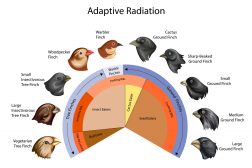Definition
noun
A form of nastic movement (of a plant or a fungus) as a response to touch or vibration
Supplement
Nastic movements pertain to the plant movements in response to a stimulus. There are many forms of nastic movements and one of them is called thigmonasty. Thigmonasty is a form of nastic movement by a plant or a fungus in response to touch or vibration.1
Thigmonasty is different from thigmotropism. Both of them are a response to the touch stimulus. However, thigmotropism is a directional movement response whereas thigmonasty is not. Furthermore, thigmotropism is one that involves the growth response of the plant rather than its movement. An example of thigmotropism is the coiling of tendrils or twiners upon contact to objects for support. In thigmonasty, an example is the shutting of a venus fly trap.
The drooping of leaflets of Mimosa pudica when touched is also a thigmonastic movement. It is because the response of this plant is not influenced by the direction of stimulus, which is a characteristic of thigmotrophic movements.
Another example is the shrinking and rebounding of the anthers when a pollinator lands on the flower of thistles. The insect is subsequently loaded with pollen.
Synonym(s):
- seismonasty
- haptonasty
Compare:
See also:
Reference(s):
1 Stiles, W. (1994). Principles of Plant Physiology. Discovery Publishing House. pp. 520–







